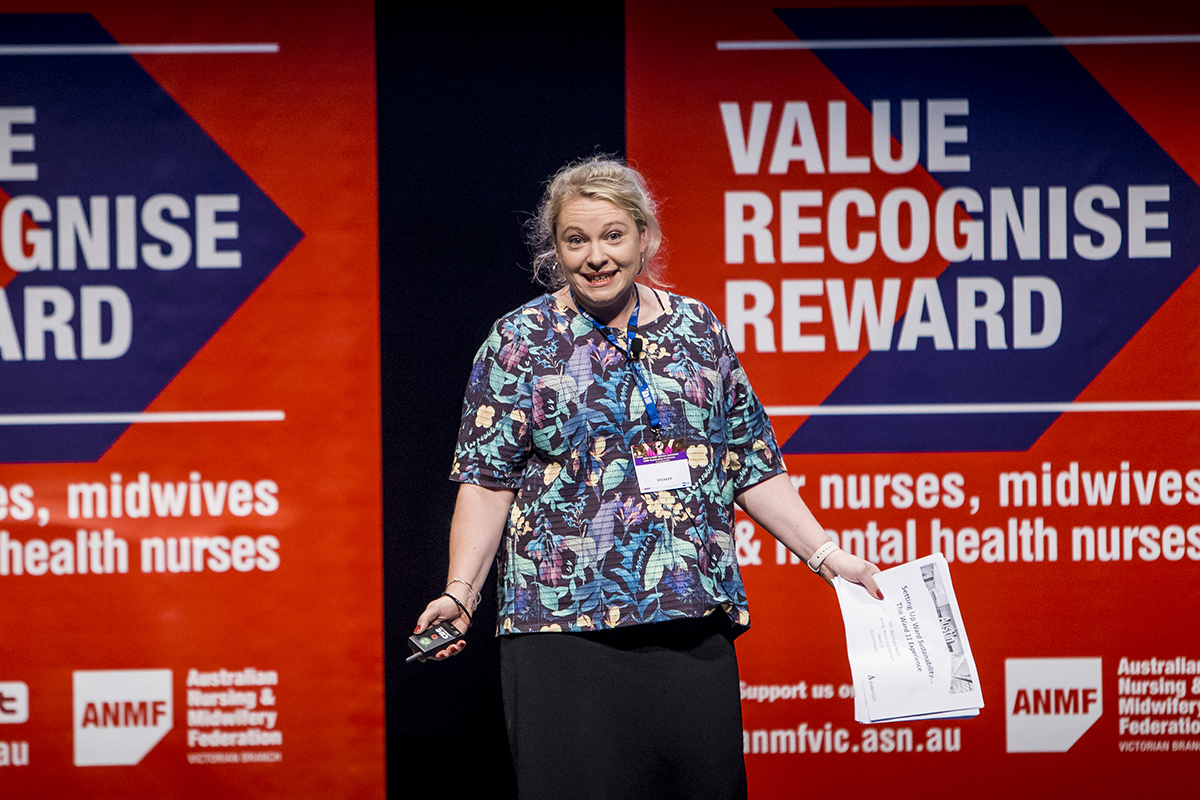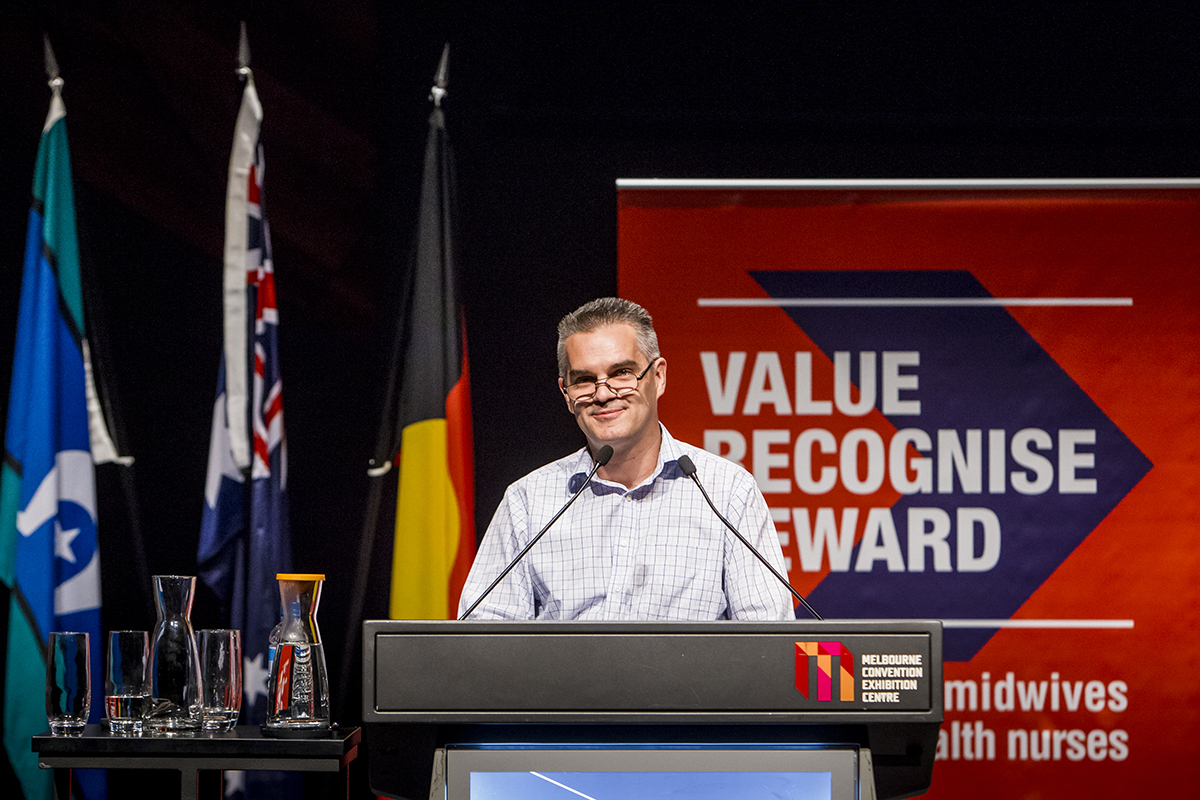
Trish Schwerdtle says there is no Planet B. Photograph by Jorge de Araujo
Brace yourself Victoria, more than 700 nurses and midwives are armed with a practical ‘to do’ list to change the health system’s impact on the environment.
They’re going to review their hospital or health facility’s mission statement and environmental management plan so they can make informed requests to management for support and resources to change the way things are done. And here’s the best part, their initiatives will reduce expensive clinical waste, reduce the waste sent to landfill, improve patient recovery and staff morale and save money.
That’s because, says registered nurse Ros Morgan, MC at the ANMF’s 2017 Health and Environmental Sustainability Conference, ‘nurses and midwives recognise the link between the environment and human health and our practice and want to be part of the solution’.
With her infectious enthusiasm for change Ms Morgan said, ‘It’s not a greeny, hippy thing that’s going to go away, human health is impacted by climate change, by the chemicals that we put in the ground, by air pollution, by the quality of our water, by the way that we dispose of our waste.’
Acclaimed horticulturalist Jamie Durie, one of the first to attend former American Vice President Al Gore’s climate reality training, gave an overview of the climate extremes, including drought, Australia was facing.
He encouraged the audience to agitate local councils to recognise residential grey water systems that would reduce the amount of precious drinking-quality water used on gardens. Solar panels, efficient hot water systems, planting native plants and establishing a worm farm at home were also on Mr Durie’s list of practical ‘to do’ ideas.
Those who love data soaked up the presentations by Professor Peter Doherty, Nobel Laureate and former Australian of the Year, and Australian National University environment, climate and health researcher Dr Liz Hanna.
Victorian Industrial Relations Minister Natalie Hutchins said there were increased policy and funding requirements for health services to develop management plans focused on energy, carbon, water and waste. In addition, for the first time the public sector nurses and midwives enterprise agreement requires hospital management, the Victorian Hospitals’ Industrial Association and the ANMF to focus on reducing hospital waste.
Registered nurse and horticulturalist Steve Wells made everyone green with envy talking about his work designing beautiful hospital gardens. As Austin Health’s Gardens and Grounds Project Officer he has created green sanctuaries used for patient rehabilitation, for patients and visitors to share a more ‘normal’ moment in the sun and places for staff to recharge.
The conference highlight was a series of case studies of nurses, employed at Barwon Health, the Alfred Hospital and Austin Health, who have introduced successful workplace waste reduction programs.
Sustainability Victoria Chief Executive Officer Stan Krpan said a mobilised, educated and organised workforce was key to the transition to a low-carbon economy. He encouraged everyone to make the TAKE2 pledge.
St Vincent’s Health Group Manager, Energy and Environment Matt Power said his organisation had reduced total energy consumption by 35 to 40 per cent by implementing multiple energy efficient technologies simultaneously which gave a ‘massive bang for your buck’.
Talk of ‘Armageddon’ is disengaging, according to Monash University lecturer Trish Schwerdtle who is integrating environmental sustainability learning objectives into the undergraduate nursing curriculum. She hopes her ‘green curriculum’ will become the ‘new normal’ in nursing and midwifery. She also believes Gen Y will save planet Earth because they are opportunistic and innovative and change was becoming less about hierarchy and more about the ability to influence a network.
More than just providing climate change evidence and data, the conference inspired 740 nurses and midwives to roll up their sleeves and agitate for change.




